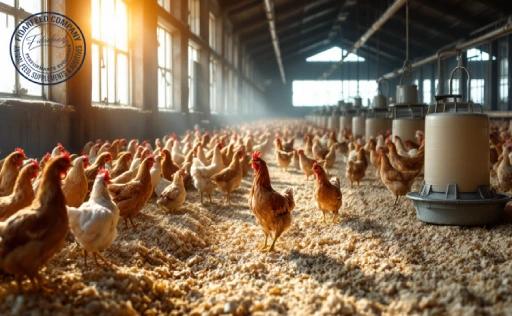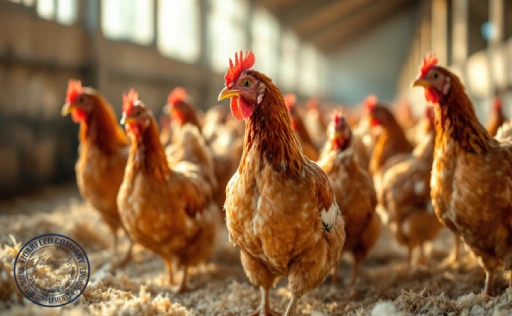Effective Vaccination Methods for Controlling Avian Pox in Poultry are critical for maintaining healthy flocks and ensuring high productivity. Whether you manage a small backyard flock or a large commercial operation, understanding how to prevent this stubborn disease can save you time, money, and unnecessary losses. In this article, we’ll walk through why vaccination is so important, explain the disease itself, and guide you step-by-step through proven vaccination techniques. Read on to discover actionable strategies and expert advice that you can apply right away to protect your birds.
Why Vaccination Is Essential for Controlling Avian Pox in Poultry
Vaccination is the most effective way to control avian pox in poultry. Avian pox can cause severe health issues in chickens, turkeys, and other poultry species. The disease leads to lesions on the skin, eyes, and internal organs, which can impair the birds’ ability to eat, drink, or even breathe properly. In severe cases, it can result in death. For breeders, this translates to significant economic losses due to decreased egg production, poor growth rates, and increased veterinary expenses.
Learn more about: Probiotic Supplement for Poultry
Vaccination protects both individual birds and the entire flock from the virus. When administered properly, it boosts the immune system of the birds, preventing them from contracting the disease or minimizing its effects if they do. For commercial poultry operations, preventing avian pox through vaccination ensures that the birds stay healthy, productive, and profitable. This is why implementing an effective vaccination program is a critical aspect of poultry management.
Understanding Avian Pox: What Every Poultry Breeder Should Know
Avian pox is caused by the avian poxvirus, which is transmitted primarily through direct contact with infected birds or contaminated surfaces. It can also spread via blood-feeding insects like mosquitoes. The virus affects both wild and domesticated poultry, and its impact varies based on the bird’s age, immune status, and the strain of the virus.
Learn more about: Comprehensive Guide to Salmonella Management in Poultry Farms: Protecting Chickens and Humans
There are two main forms of avian pox:
-
Dry form: This is the most common form, characterized by raised, wart-like lesions on the skin, typically around the head, eyes, and comb.
-
Wet form: This form affects the mucous membranes in the mouth, throat, and respiratory system, leading to difficulty swallowing and breathing.
Symptoms of avian pox include loss of appetite, lethargy, weight loss, respiratory distress, and visible lesions. Infected birds can also experience reduced egg production, slower growth, and poor overall performance. The disease can be fatal, especially in young or immunocompromised birds.
Effective Vaccination Methods for Controlling Avian Pox in Poultry: An Overview
Vaccination against avian pox is a proven strategy to prevent the spread of the disease within a flock. There are several vaccination techniques available, each suited for different flock sizes, management systems, and production goals. The primary goal of vaccination is to stimulate the bird’s immune system, creating antibodies that will protect it from future infection.
Learn more about: Boost Poultry Health: How Zeolite Cuts Ammonia and Cleans the Air
Vaccines for avian pox are generally administered through three methods: the wing-web method, feather follicle method, and scratch method. Each technique is designed to ensure that the vaccine reaches the bird’s immune system effectively.
Wing-Web Method: A Proven Technique for Avian Pox Vaccination
The wing-web method is the most widely used vaccination technique for poultry. It involves making a small puncture in the skin of the bird’s wing, specifically in the webbing area between the third and fourth primary feathers. Here’s a step-by-step guide to the process:
-
Preparation: Ensure that the vaccine is stored correctly according to the manufacturer’s instructions. Gather all necessary equipment, including syringes, needles, and a clean surface for the procedure.
-
Vaccination: Using a sterile needle, inject a small amount of the vaccine into the wing web. The injection site should cause a mild irritation that will induce the immune system to respond.
-
Post-Vaccination Care: After the vaccine is administered, ensure the bird is returned to its flock in a clean, stress-free environment. It’s essential to monitor for signs of infection or adverse reactions, though these are rare.
Learn more about: Smart Chicken Waste Management: Sustainable Solutions for Poultry Farmers
The wing-web method is highly effective because the vaccine is absorbed quickly into the bloodstream, triggering a robust immune response. For best results, vaccination should be carried out when birds are young, typically between 6 and 12 weeks of age.
Other Vaccination Methods: Exploring Alternatives for Different Flock Needs
While the wing-web method is the most common, other vaccination techniques may be more suitable for certain situations. These include:
-
Feather Follicle Method: This method is often used for larger commercial flocks. The vaccine is administered into the feather follicles, and the bird’s immune system reacts similarly to the wing-web technique. It’s less invasive, making it ideal for high-volume vaccination programs.
-
Scratch Method: This method involves scratching the skin lightly with a sterile needle, causing the vaccine to be absorbed into the bloodstream through the damaged skin. It is typically used in smaller, less intensive operations and can be applied to both chicks and adult birds.
Each of these methods has its advantages and drawbacks, so it’s essential for breeders to choose the one that best fits their operation’s size and vaccination needs.
Best Practices for Successful Avian Pox Vaccination Programs
For a vaccination program to be effective, it’s crucial to follow best practices. Here are some key tips for success:
-
Timing: Vaccinate young birds early, ideally between 6-12 weeks of age. This ensures they develop immunity before they are exposed to the virus.
-
Proper Handling: Ensure that the vaccine is stored at the correct temperature and used within the recommended timeframe. Improper storage or handling can reduce vaccine efficacy.
Learn more about: The Benefits of Probiotics in Poultry: A Must-Know Guide
-
Clean Environment: Minimize stress and maintain a clean environment before and after vaccination. Stress can negatively affect the immune response and increase the risk of side effects.
-
Record Keeping: Keep detailed records of vaccination dates, methods used, and any observed reactions. This helps monitor the program’s effectiveness and makes it easier to troubleshoot if any issues arise.
Monitoring Your Flock After Vaccination: What to Expect
After vaccination, it’s important to monitor your flock for signs that the vaccine has worked. A “take” refers to the formation of a small scab or lesion at the vaccination site, indicating that the bird’s immune system has responded to the vaccine.
Learn more about: Cobb 500 Broiler Manual: Your Complete Guide to Profitable Poultry Farming
However, not all birds will show a “take,” and some may have a mild reaction with swelling or redness at the site. These reactions are usually temporary and should subside within a few days. If you observe more severe symptoms, such as excessive swelling, infection, or fever, consult with a veterinarian.
Final Thoughts: Protecting Your Poultry Through Effective Avian Pox Vaccination
Vaccination is a powerful tool in preventing avian pox and ensuring the health and productivity of your poultry. By understanding the disease, choosing the right vaccination method, and following best practices, breeders can significantly reduce the risk of avian pox outbreaks.
Effective vaccination not only protects the flock but also enhances the overall efficiency of poultry operations by reducing production losses, veterinary costs, and potential disease spread. By staying proactive, you can keep your birds healthy and profitable in the long term.
Remember, the key to success lies in consistency and proper management. Keep learning, stay informed, and continue implementing these vaccination methods to safeguard your flock against avian pox. If you have any questions or comments, feel free to share your experiences or ask for further guidance in the comment section below.












